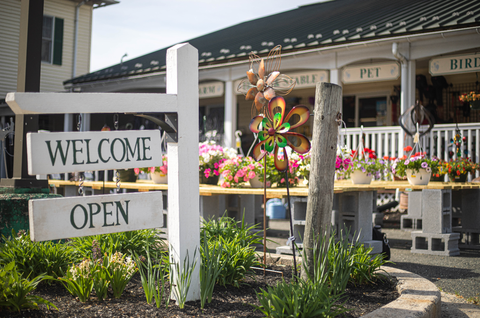There are over thirteen varieties of commonly called Pussy Willows on the market today. All develop catkins (Cylindrical flower clusters) early in the spring providing much-needed nectar and pollen to native bees when nothing else is available. Catkins can be green, gray, pink, black, or brown. Pussy Willows

develop into large shrubs or small trees and prefer moist soil conditions, full sun, and room to spread.
Our native pussy willow variety, Salix discolor, develops silver-gray catkins prior to leaves emerging in early spring. These catkins are a food source for songbirds and small mammals as well as our native bees. Willows are also host to Morning Cloaks and Viceroy Butterflies and harbor other larvae for native songbirds to feed their young in spring. The habitat and energy provided by the bloom after a hard winter is appreciated and valuable as a natural host for biodiversity in your backyard ecosystem.

Other pussy willows that may be available commercially are:
- Goat Willow -Salix caprea –silver to light pink catkins
- Japanese Pussy Willow - ‘Mt. Asama’– Salix chaemeloides –pink catkins
- Black Pussy Willow –‘Melanostachys’ – Salix gracilistyla - black catkins
- Pink Pussy Willow - 'Mt. Aso’ –Salix gracilistyla – deep pink catkins
- Dappled Willow – ‘Hakuro Nishiki’ – Salix integra - variegated leaves – silver to green catkins

All will provide early catkins for wildlife and offer good color in early spring. To determine if your plant is a male or female look at the catkins. Male flowers have yellow stamens that develop as the catkins age. Female flowers develop into greenish seed capsules.
Pussy willows can grow to twenty feet and will typically sucker into a thick mass of branches. You can remove the suckers and form a tree or just allow it to spread. The new suckers will develop more catkins than the older established branches. If you want to have more catkins prune your shrub hard every three years.
To force pussy willow stems, place cuttings in water as soon as possible after cutting. Since they like full sun, place them in a bright room for best development.












